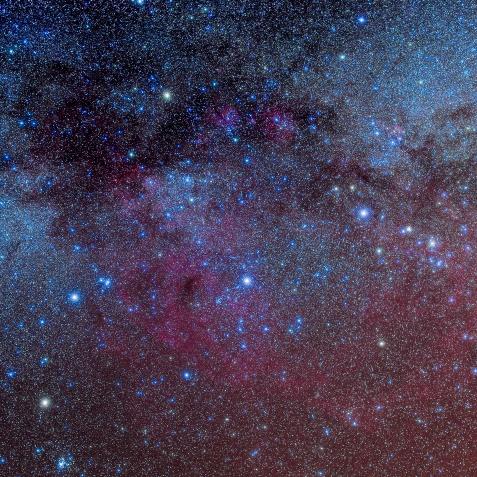
ESA/NASA/Hubble
Are Aliens Calling Us From Proxima Centauri?

The internet and news media alike are abuzz with news about a radio buzz coming from Proxima Centauri, the nearest neighbor star to our sun a mere four and a quarter light-years away. That star happens to host a planet, called Proxima b (because we don’t have a cooler name for it yet), that sits in the habitable zone of its parent star. That means that the planet can potentially host liquid water, and where there’s liquid water there’s a chance for life.
Mysterious radio signal coming from a potentially-habitable star system? It’s almost too good to be true. And it is.
I’ll just go ahead and say it right now and get it over with: it’s not aliens. It’s never aliens. We’ve been listening for calls from E.T. for well over half a century now, and every single mysterious radio signal has turned out to be…less than mysterious.
But could this be it? Could this be the one to buck the trend, and be our first communication from an alien civilization?
First, let’s be cautious about the source. I mean about the news, not the radio signal. The story first appeared in The Guardian and Scientific American, both reputable publications. But the story was based on a leak from someone in the Breakthrough Listen team, the collaboration funded by billionaire Yuri Milner to piggyback on radio telescopes around the world to listen for aliens calling.

ESO/M. Kornmesser/NASA
Artist’s impression of the exoplanet Proxima Centauri b.
There is no paper. There are no data. There is no peer-review. There is no discussion about what they’ve found, the work they’ve done, and assumptions they’ve made, or the analysis performed. All we know is that they caught a bright radio signal coming from the vague direction of Proxima Centauri a few times in the summer of 2019 – note that they didn’t see the signal every time they looked, only sometimes.
The signal is at a frequency of 982.002 megahertz, which is generally free from human-made interference, hence it piqued the interest of the researchers. But while eager E.T. explorers want to point to Proxima b as the source, apparently the signal changed frequency in a way incompatible with the way that planet orbits its star.
And that’s it. That’s literally all we know.

ESO/M. Kornmesser/NASA
This artist’s impression shows a view of the surface of the planet Proxima b orbiting the red dwarf star Proxima Centauri, the closest star to the Solar System. The double star Alpha Centauri AB also appears in the image to the upper-right of Proxima itself. Proxima b is a little more massive than the Earth and orbits in the habitable zone around Proxima Centauri, where the temperature is suitable for liquid water to exist on its surface.
Here’s the thing. Even if we’re never, ever able to come up with an explanation for this signal – even if we rule out every single known human and astrophysical source – it still doesn’t mean that this is a sign of alien intelligence. Failing to come up with an explanation does not give you permission to identify a signal as produced by aliens.
That’s because, being intelligent creatures, aliens are in theory able to generate any kind of signal you could possibly want. Anything you find mysterious in the night sky could be explained by aliens, and so that makes it useless as a scientific hypothesis to explain an unknown signal. To properly hunt of aliens, you have to predict what kind of evidence you expect to find, then go looking for that.

NASA/JPL-Caltech/T. Pyle
Proxima Centauri b is a super Earth exoplanet that orbits a M-type star. Its mass is 1.27 Earths, it takes 11.2 days to complete one orbit of its star, and is 0.0485 AU from its star. Its discovery was announced in 2016.
And that’s why I’m entirely confident in saying that even if we never explain the origins of this signal (which is itself highly unlikely), it’s still not aliens.



















